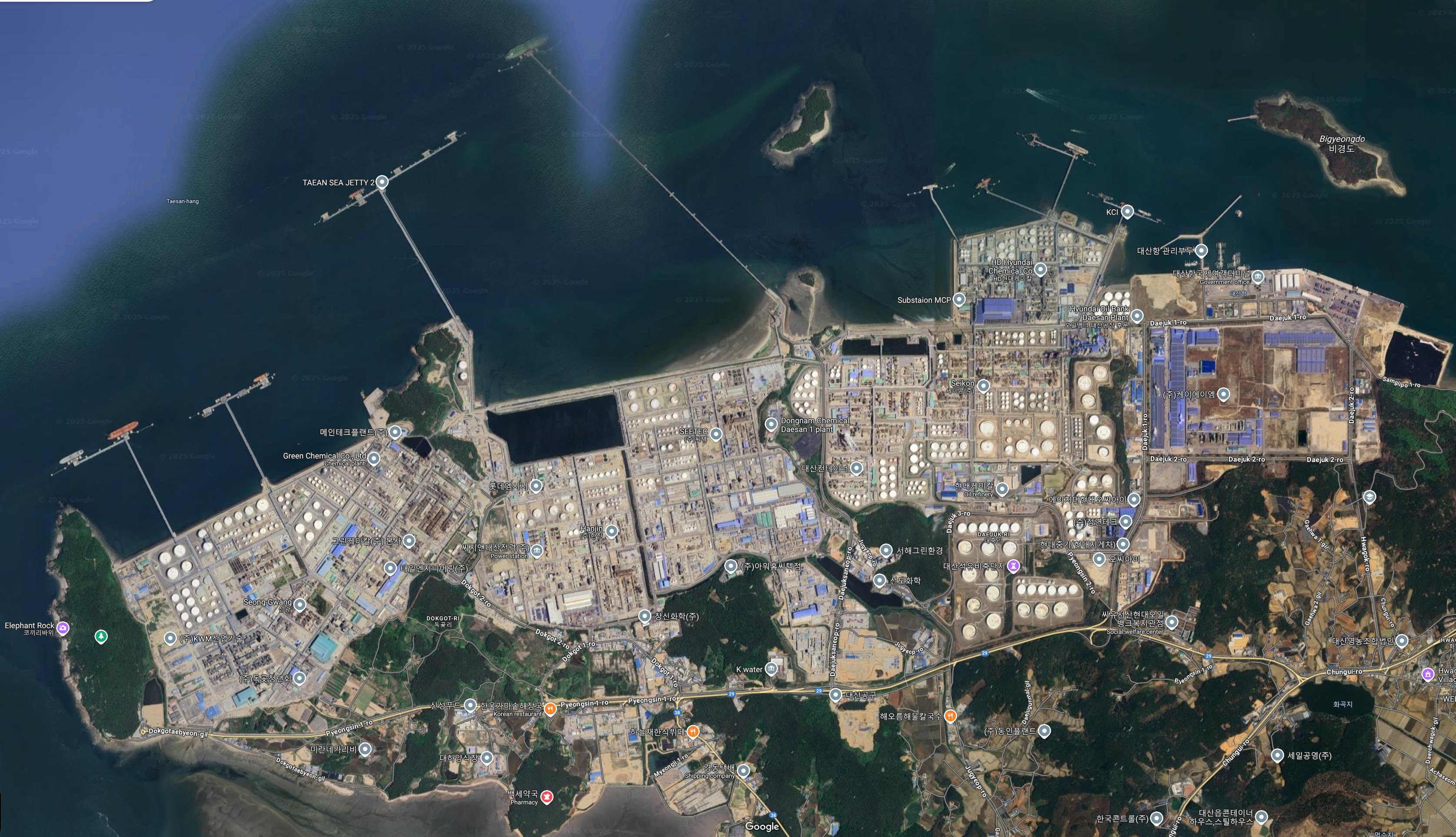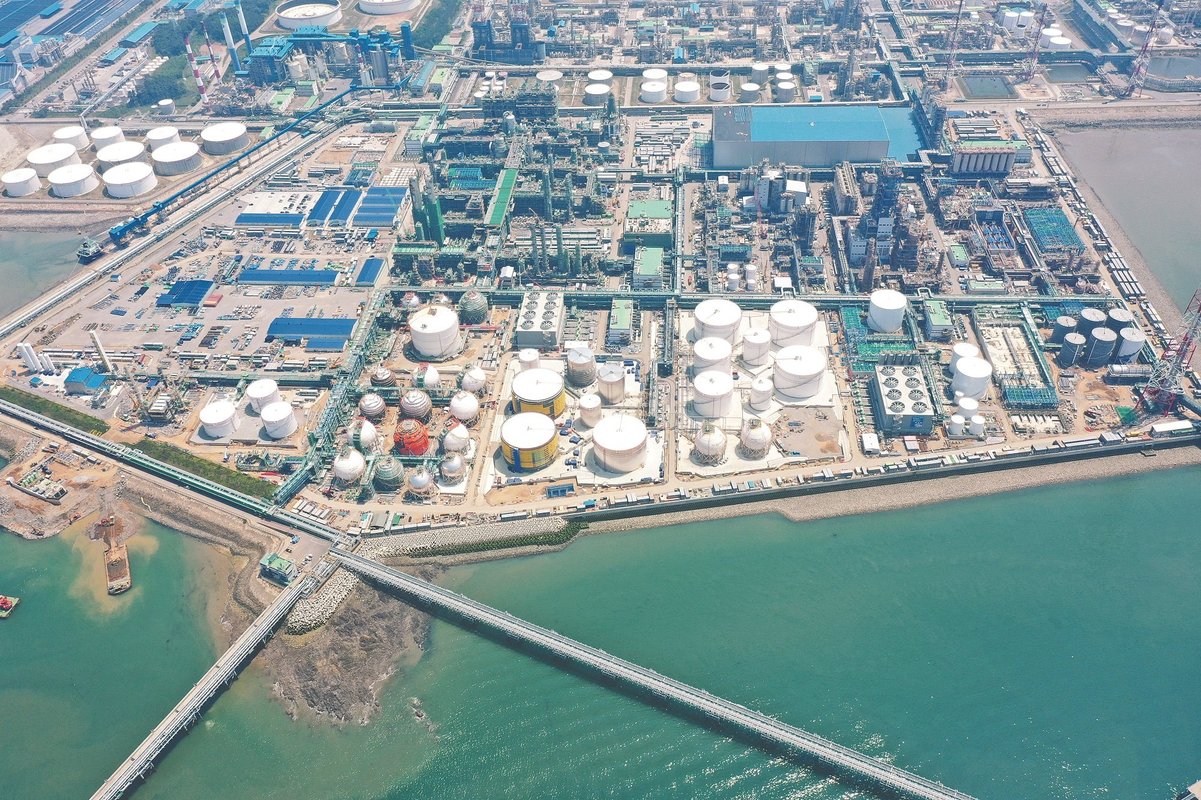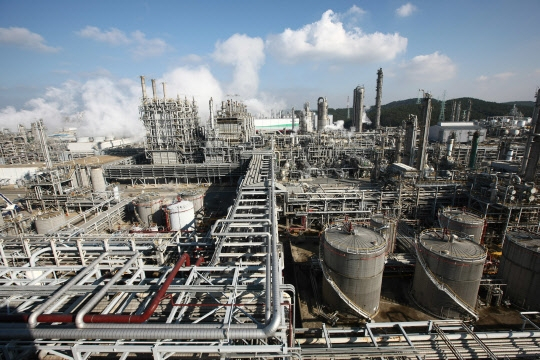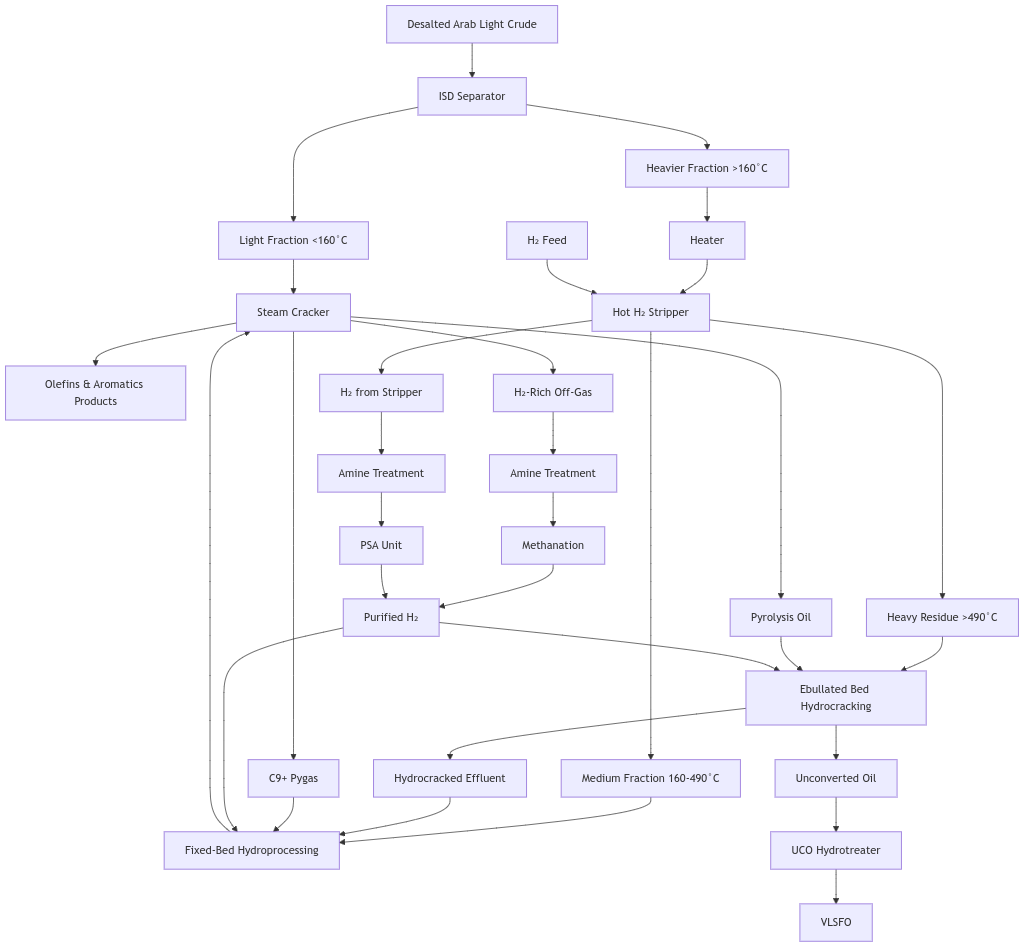Lotte Chemical and Hyundai Chemical's Strategic Consolidation Amid China's Ethylene Overcapacity

Satellite View of the Daesan Petrochemical Complex with Manufacturing Sites from 롯데케미칼 (Lotte Chemical) | LG화학 (LG Chem) | 한화토탈에너지스 (Hanwha TotalEnergies) | HD현대케미칼 (HD Hyundai Chemical) | HD현대오일뱅크 (HD Hyundai Oilbank) | 코오롱인더스트리 (Kolon Industries) | 한화솔루션 (Hanwha Solutions) | 현대OCI (Hyundai OCI) | via Goggle Maps
South Korea’s petrochemical sector is undergoing a pivotal transformation as Lotte Chemical and Hyundai Chemical advance plans to integrate their naphtha cracking facilities at the Daesan Petrochemical Complex. This consolidation is a direct response to China’s overwhelming ethylene overcapacity—a structural market shift that has eroded profitability across Asia. By merging operations, the companies aim to fortify competitiveness through operational synergies and strategic realignment, setting a precedent for industry-wide adaptation.
China’s Ethylene Oversupply: The Imperative for Restructuring
China’s aggressive petrochemical expansion has created a global supply glut, with ethylene capacity in 2025 is forecast to be 121% more than local demand. This surplus has flooded international markets, compressing margins for producers reliant on naphtha feedstock, like those in Korea. Lotte Chemical’s 64% operating profit decline and HD Hyundai’s 58% drop reflect the severity of this pressure. The Daesan integration addresses this crisis by targeting ₩70–100 billion in annual savings through shared infrastructure, streamlined management, and optimized feedstock procurement.

Daesan Petrochemical Complex Aerial View | Hyundai Engineering & Construction (Accessed 14th June 2025)
The Daesan Integration: Scope and Strategic Rationale
The merger centers on combining Lotte Chemical’s 1.1 million-ton ethylene facility with HD Hyundai Chemical’s 850,000-ton unit at Daesan—a joint venture already co-owned by both entities. This consolidation will unify control over naphtha cracking technologies and derivative production, including polyethylene, propylene, and aromatics. Critically, it leverages the Daesan complex’s proximity to Chinese markets while mitigating the cost disadvantages Korean players face against Middle Eastern and North American rivals.

Lotte Chemical's domestic petrochemical complex in Daesan, South Chungcheong province (Courtesy of Lotte Chemical) | via The Korea Economic Daily, 7th Feb 2022
Beyond Cost Savings: Portfolio Diversification and Innovation
While cost savings are vital, the merger’s strategic value lies in enabling portfolio diversification. The integrated entity can redirect capital from commoditized products toward high-value sectors, such as advanced materials and feedstock innovation, including exploration of crude-to-chemicals (TC2C) processes to bypass naphtha volatility. This shift aligns with Korea’s broader industrial policy, which now incentivizes specialization over volume-driven growth.

TC2C Block Flow Diagram - © portfolio planning PLUS
Industry-Wide Implications and Policy Support
The Lotte-Hyundai initiative transcends bilateral cooperation—it signals a necessary evolution for Korea’s petrochemical industry. As China’s overcapacity persists, further consolidation is inevitable. The Korea Chemical Industry Association, supported by government and consulting reports, advocates reducing generic capacity by as much as 50%, particularly in hubs like Daesan and Yeosu where overlapping facilities are most concentrated. Legislative proposals now offer tax incentives for coordinated output cuts, and the government is expected to use a “carrot and stick” approach to accelerate reform, rewarding active participants in restructuring while withholding support from those that resist.
Conclusion: A Template for Resilience in the Asian Petrochemical Sector
China’s ethylene oversupply has irrevocably altered the petrochemical landscape, making the Lotte-HD Hyundai integration a tactical imperative rather than an optional efficiency play. By transforming Daesan into a hub of optimized production and innovation, the partnership offers a template for Korean industry resilience. Success will depend on sustained commitment to high-value differentiation and policy-supported restructuring—a path that may define Asia’s chemical sector for decades.
#lotte #lottechemical #hyundai #hyundaichemical #daesan #korea #petrochemicalcomplex #naphthacracker #ethylene #oversupply #consolidation






